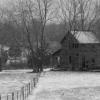I would have to reread the post to see if anything has changed.In all seriousness, the post was mainly to remind people there are a lot of options in BS blades and if you understand the basics you can pick a proper blade for most any situation, it wasn't intended as specific recommendation thread though I did make them. I think the major revelation I have had sense them in relation to your thread is the number of production turners I have talked to that use the Diemaster instead of a blade with more set for green wood. Moving up to 4tpi from 3 will indeed slow the feedrate BUT tpi is only part of the feedrate another large factor is blade speed. Not sure of the 18BX blade speed but I am guessing it is in the 3500-4000 fpm range. The Diemaster's thick backer and preference for high tension near twice the average carbon blade does have benefits for cutting blanks. It also is far less likely to be ruined hitting some metal and being dulled by all the nasty stuff in bark.
The Trimaster can be resharpened, Daily Saw in Cali does it and this time I remembered their name, it is Connecticut Saw and Tool in Stratford. Now many if any saw shops sharpen carbon and bi-metal blades, it isn't very cost effective though there may be a few out there. Most of the time when people mention sharpening them they are doing it themselves. Plenty of youtube videos on the "art". It is simple although time-consuming and I personally don't bother. Carbide blades will run 50-70 bucks to sharpen with the shipping in very general terms.
The 1/4 x .025 x 6tpi Diemaster is an excellent contour cutting blade. I tend to use a 3/8 x 4tpi Diemaster for most of my contour cutting and use standard Lenox Flexback 1/4" blades when I need tighter cuts or I am cutting thinner than 3/4" stock. My point is that if you get the Diemaster for cutting blanks it will almost certainly do what you need for the legs as well plus no change over time.
3/4" is definitely as wide as I would go with the Trimaster but you could get away with the 1" RK since it has a thinner backer. People talk a lot about wide blades for resawing but it really isn't the width of the blade that is important it is the beam strength. A more narrow blade with a thicker backer may actually have more beam strength at the same tension as a wider blade with a thinner backer.
The RK and Trimaster are very similar in value considering sharpening BUT if you plan to cut ply and MDF with this blade get the Trimaster, the triple chip grind will stay sharper longer cutting engineered wood products. The RK has a thinner kerf and leaves a slightly better finish but this is mainly of benefit when cutting veneer.
I buy my Lenox blades from Spectrum Supply but their shipping can be high for just a couple of blades. Woodcraftbands.com is an excellent source for Lenox blades as well and cheaper on small order shipping, though I don't know if they carry the Trimaster. You could also check with CTsaw.com. Other people may have other sources. Also, don't rule out your local industrial supply houses, that depends on where you live though, you might have great luck in say Houston but if you live just south of middle of nowhere Texas the local options may be lean.
In the long term don't be afraid to experiment with different blades. Given that bandsaws are usually hand fed and no two people work exactly the same way (especially cutting turning blanks) and turners are more likely to use a lot of local wood that has its own unique characteristics it pays to try different blades, as long as you understand the basics of blade type, size, and geometry you can choose blades to experiment with. I have one particular saw that I tend to use as a blade test bed, I have over 60 different blades that I have tried on it over time. I am always looking for the next great thing but there is far less innovation in woodcutting blades versus metal cutting. The only place you see much R&D money going into with woodcutting is for highspeed bandmills. Funny enough the Trimaster and Diemaster were designed as metal cutting blades and for years wood was an off-label use, today Lenox labels both for use with wood. At the correct speed the Trimaster can be used to cut titanium alloys.






 Reply With Quote
Reply With Quote



 ]. For the most part, they have lasted way longer than any others I have used. I’ve not used the Lennox Diemasters yet that Reed Gray recommends, as the tooth count is a bit higher than the WTB’s, but may try one in the future. I did have nearly as good success with a Carter Green Wood blade, that is basically the same. I bought it at our Virginia symposium 4 years ago, as they had a booth there, and it was only a little more expensive than the WTB’s.
]. For the most part, they have lasted way longer than any others I have used. I’ve not used the Lennox Diemasters yet that Reed Gray recommends, as the tooth count is a bit higher than the WTB’s, but may try one in the future. I did have nearly as good success with a Carter Green Wood blade, that is basically the same. I bought it at our Virginia symposium 4 years ago, as they had a booth there, and it was only a little more expensive than the WTB’s.